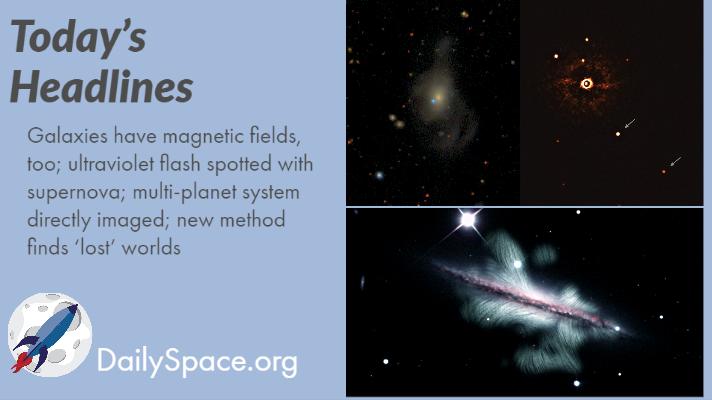
Jul 23, 2020 | Daily Space, Exoplanets, Galaxies, Supernovae, Very Large Array, White Dwarfs
Join us today as we learn that galaxies have magnetic fields, too. Also, scientists are excited to catch the ultraviolet flash of a type Ia supernova and directly image a multi-planet extrasolar system. Finally, researchers have developed a new method for finding “lost” worlds in NASA TESS data (but no dinosaurs, thankfully).
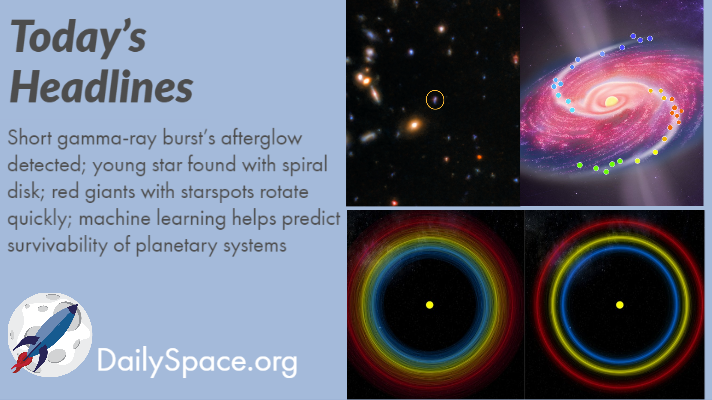
Jul 14, 2020 | Cosmology, Daily Space, Exoplanets, Gemini North, Stars
First, we look at how researchers detected the afterglow of a short gamma ray burst a mere 3.8 billion years after the Big Bang. Then we examine the discoveries of a spiral structure in the disk of a young, heavy star and how red giant stars with large starspots spin faster than those without. And finally, we see how machine learning can be used to predict what planetary systems are most likely to survive.
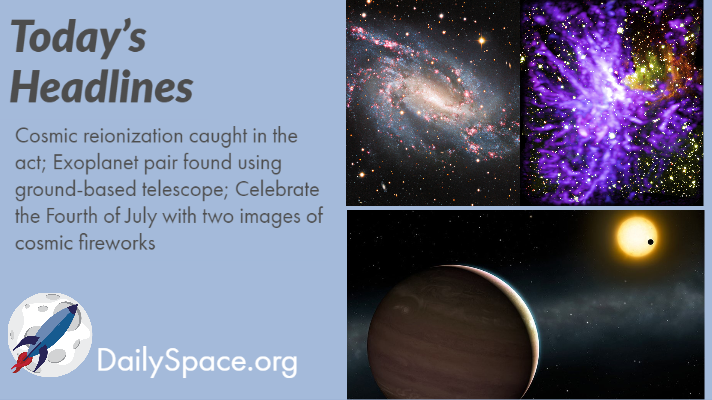
Jul 3, 2020 | Cosmology, Daily Space, Exoplanets, Observatories, Star Forming Region, Uncategorized
Join us today as we talk some more about cosmic reionization and the mounting evidence it occurred very early in the Universe. We also look at two exoplanets, found using a ground-based telescope, that are gravitationally interacting. And we celebrate the Fourth of July here in the United States with some newly released images of cosmic fireworks.
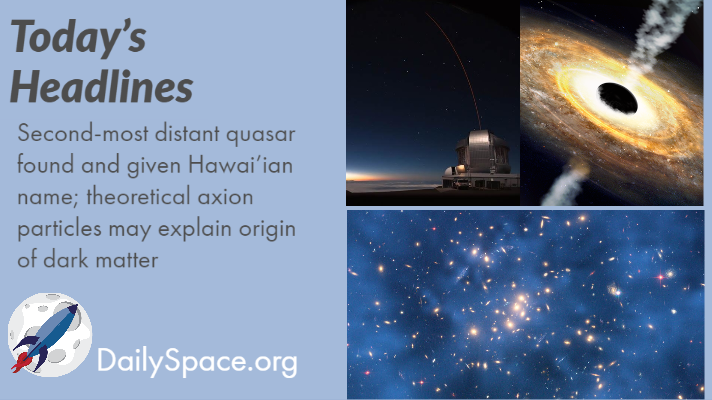
Jun 29, 2020 | Cosmology, Daily Space, Dark Matter, Gemini South, Quasar, Supermassive Black Holes
Join us today as we look at big news on a big quasar! Pōniuāʻena is the second-most distant quasar ever found, and its existence challenges conventional black hole formation theory. Also, we explain how the theoretical axion particle might be involved in the origin of dark matter.
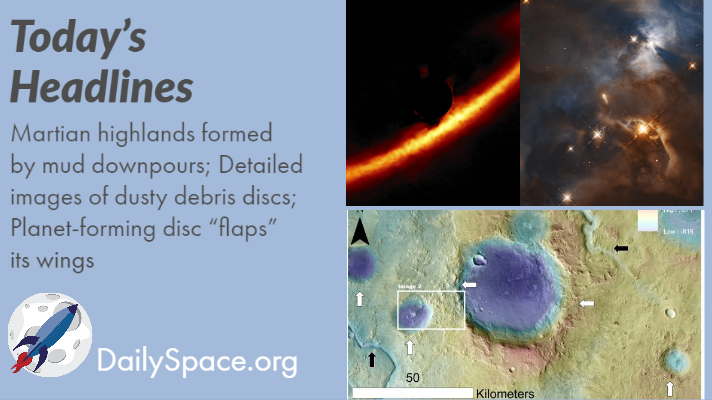
Jun 26, 2020 | Daily Space, ESA, Exoplanets, Gemini South, Mars, Star Forming Region
Join us today as we look at a possible explanation for how mudstone formed in the Martian highlands. We share a plethora of new images from the Gemini Planet Imager of detailed, dusty discs around stars. And finally, Hubble sees another planet-forming disc flap its bat-wings.
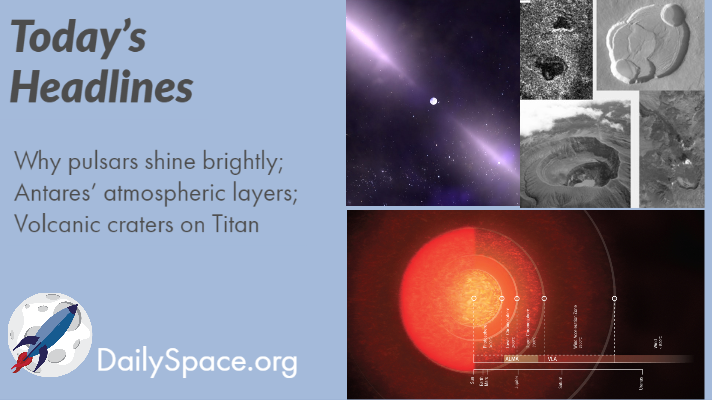
Jun 16, 2020 | Cassini, Daily Space, Neutron Stars / Pulsars, Stars, Titan, Very Large Array
Join us today as we consider a new paper on why pulsars shine so brightly (hint: it’s those pesky magnetic fields). We take a look at new images of Antares’ massive atmospheric layers. Finally, we share a story from our own Planetary Science Institute: evidence has been found that there are volcanic craters on Saturn’s moon, Titan.








 We record most shows live, on Twitch. Follow us today to get alerts when we go live.
We record most shows live, on Twitch. Follow us today to get alerts when we go live.